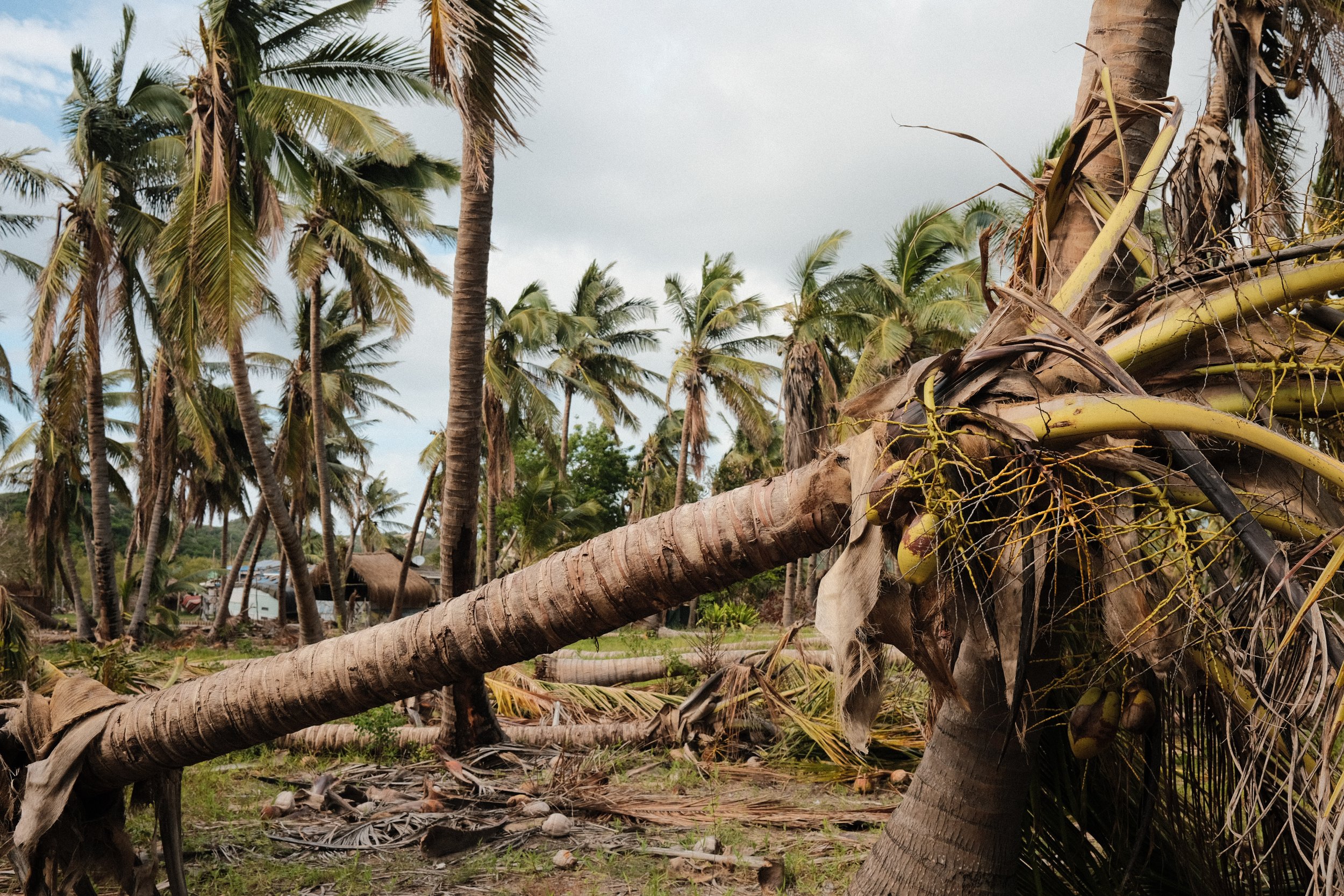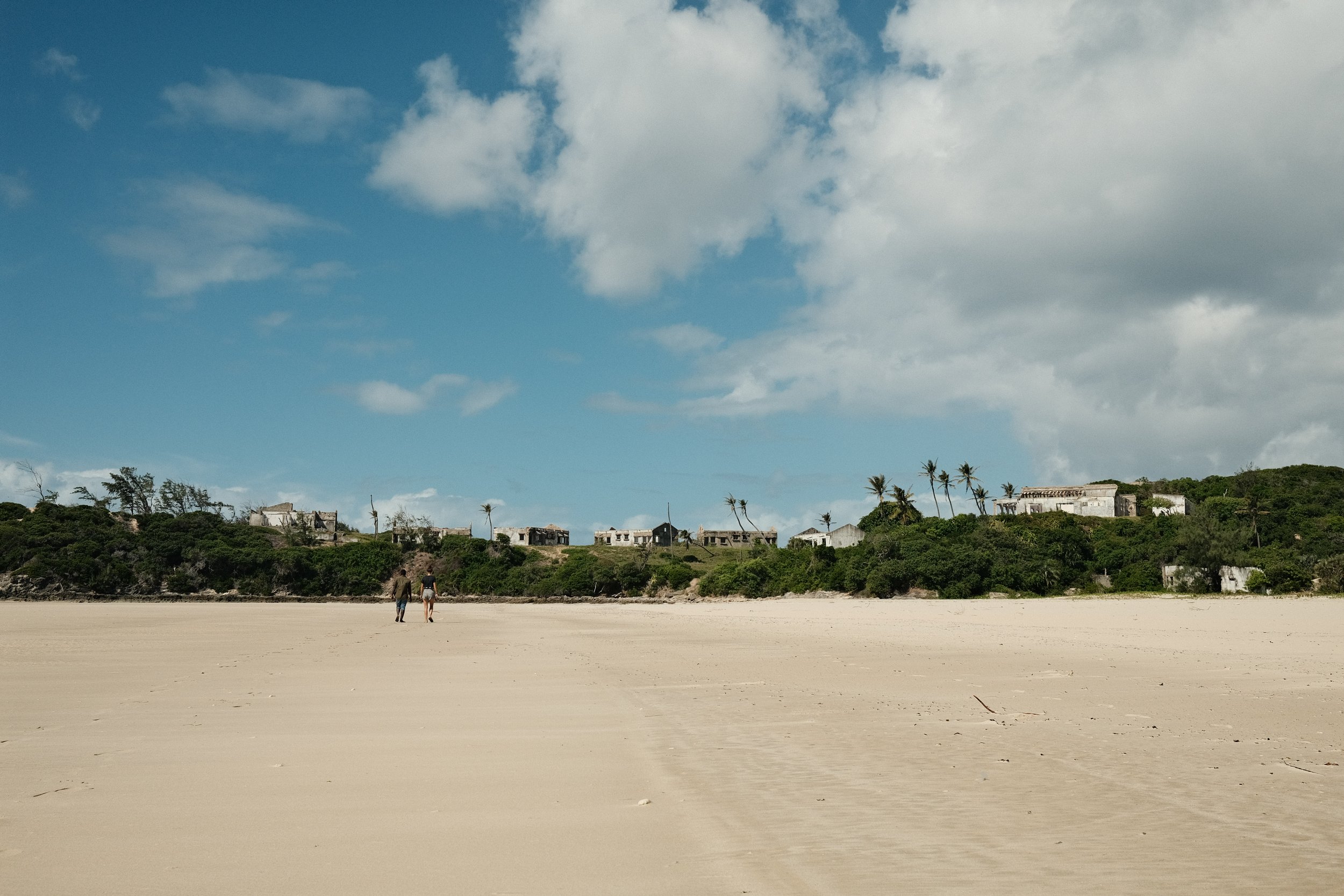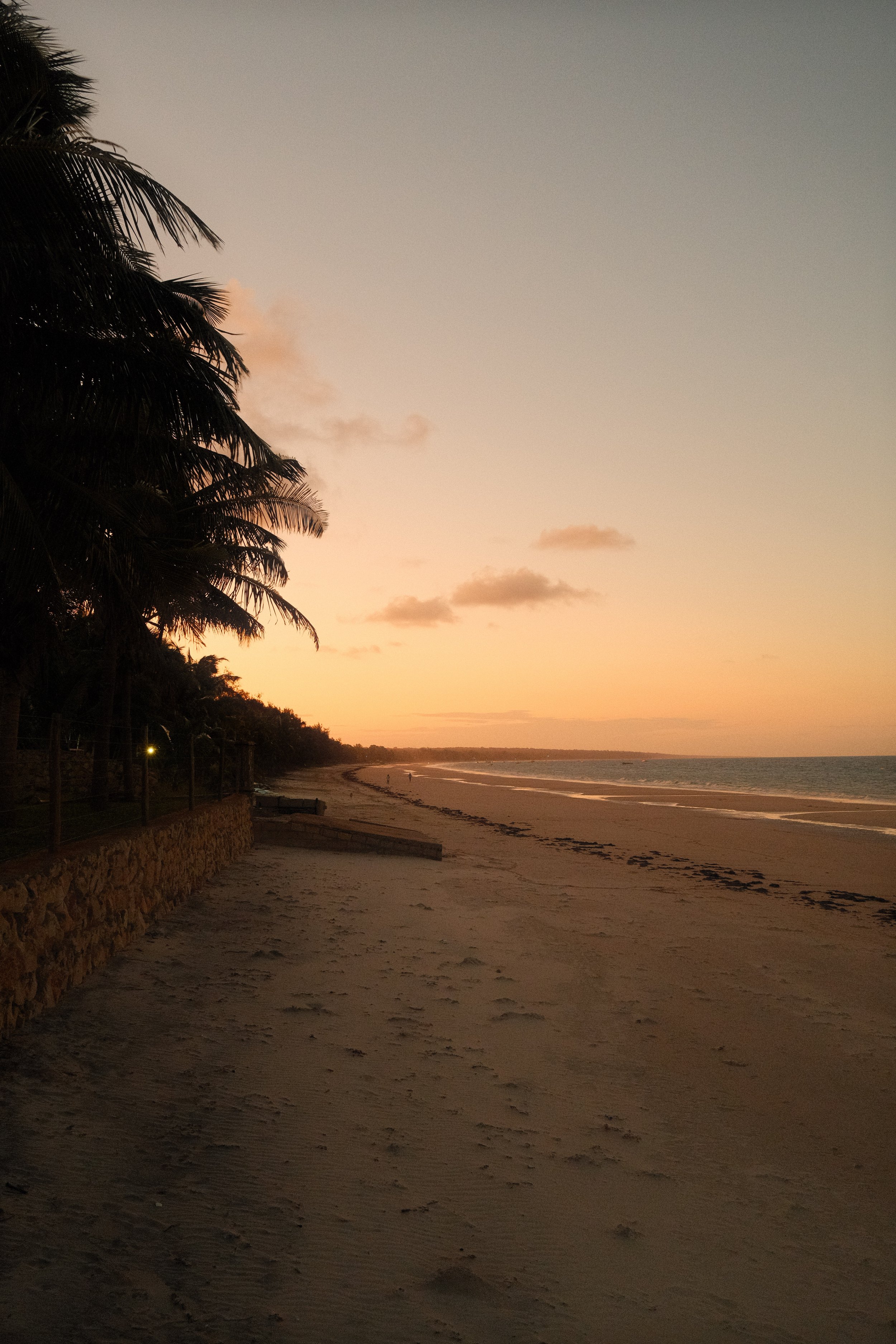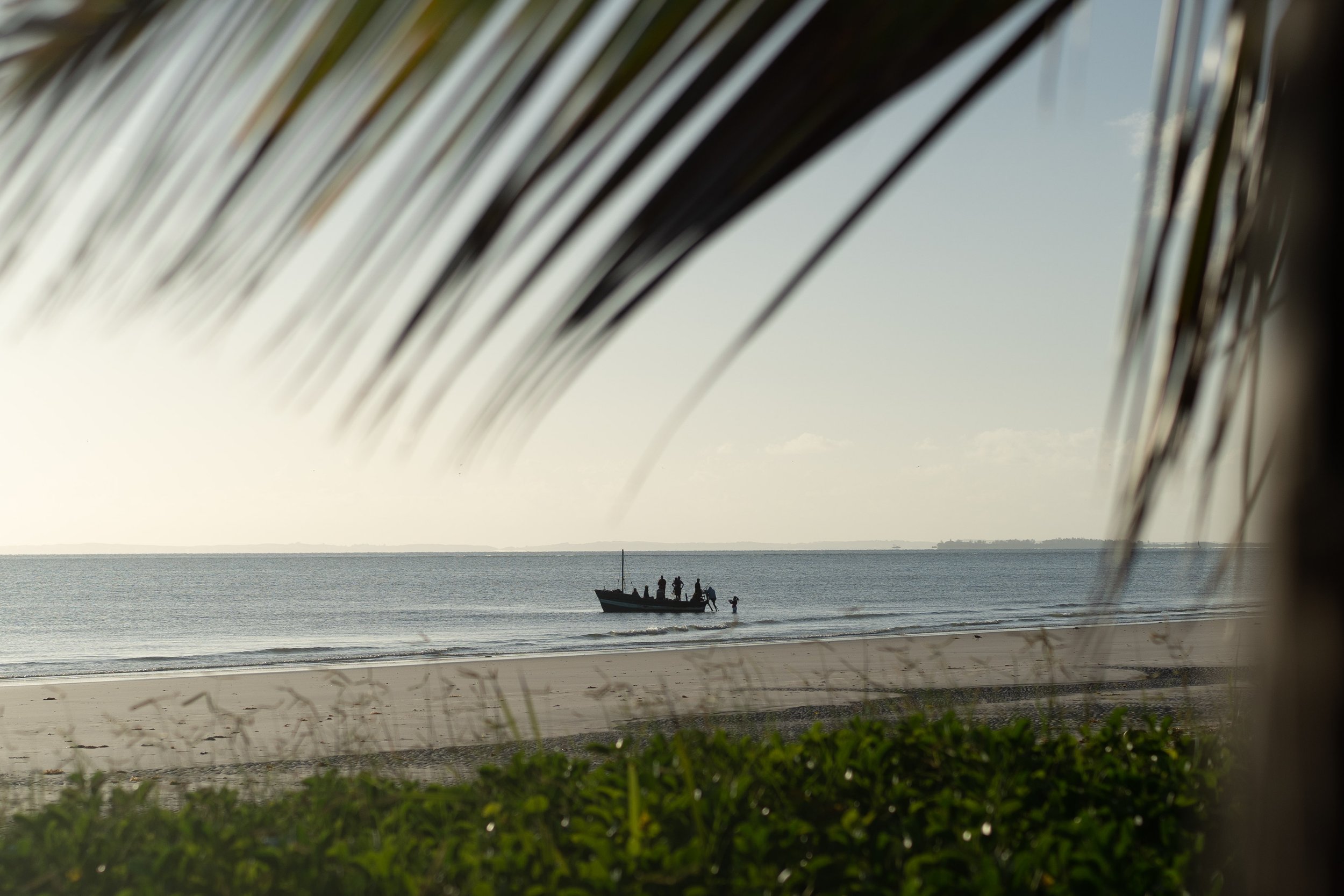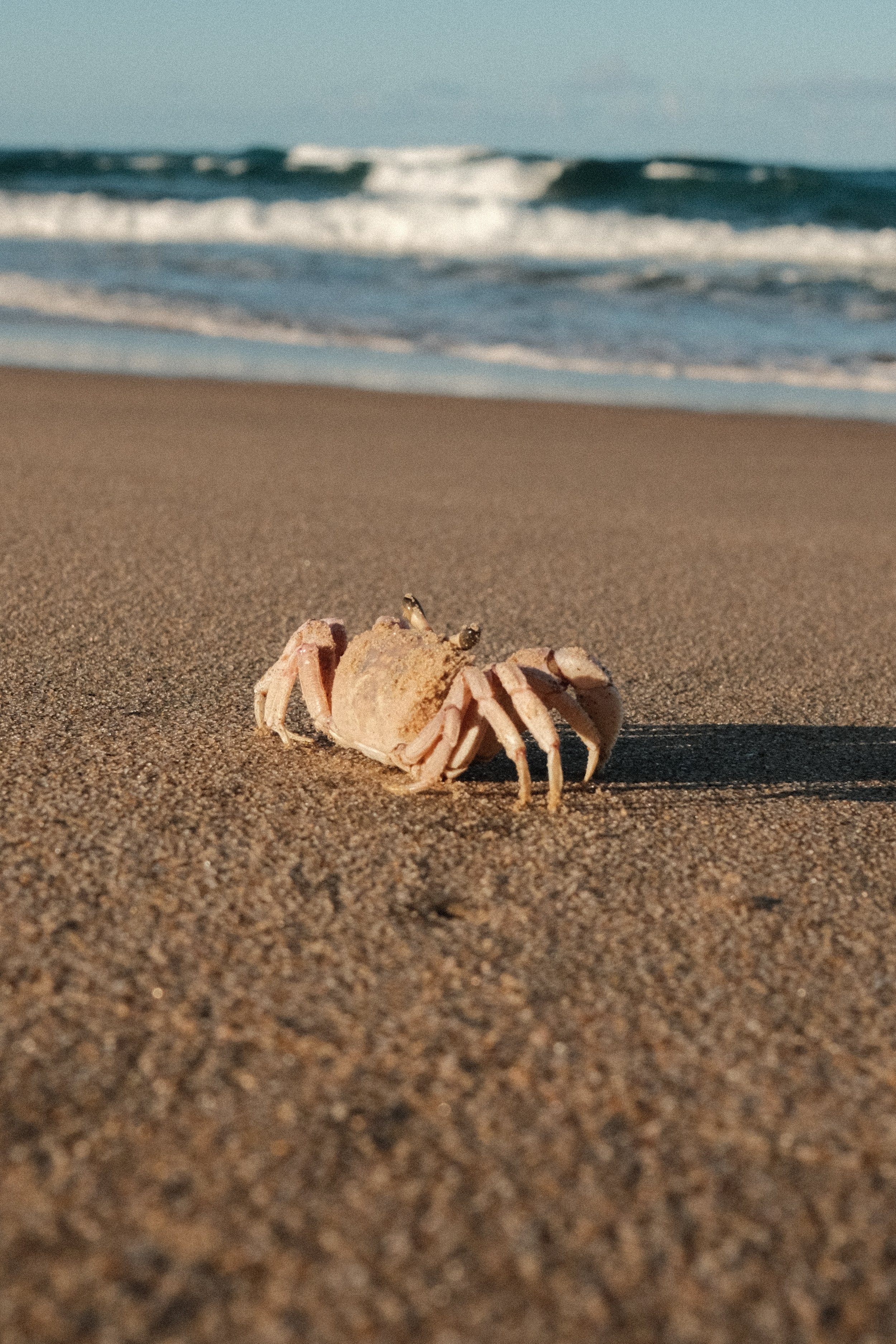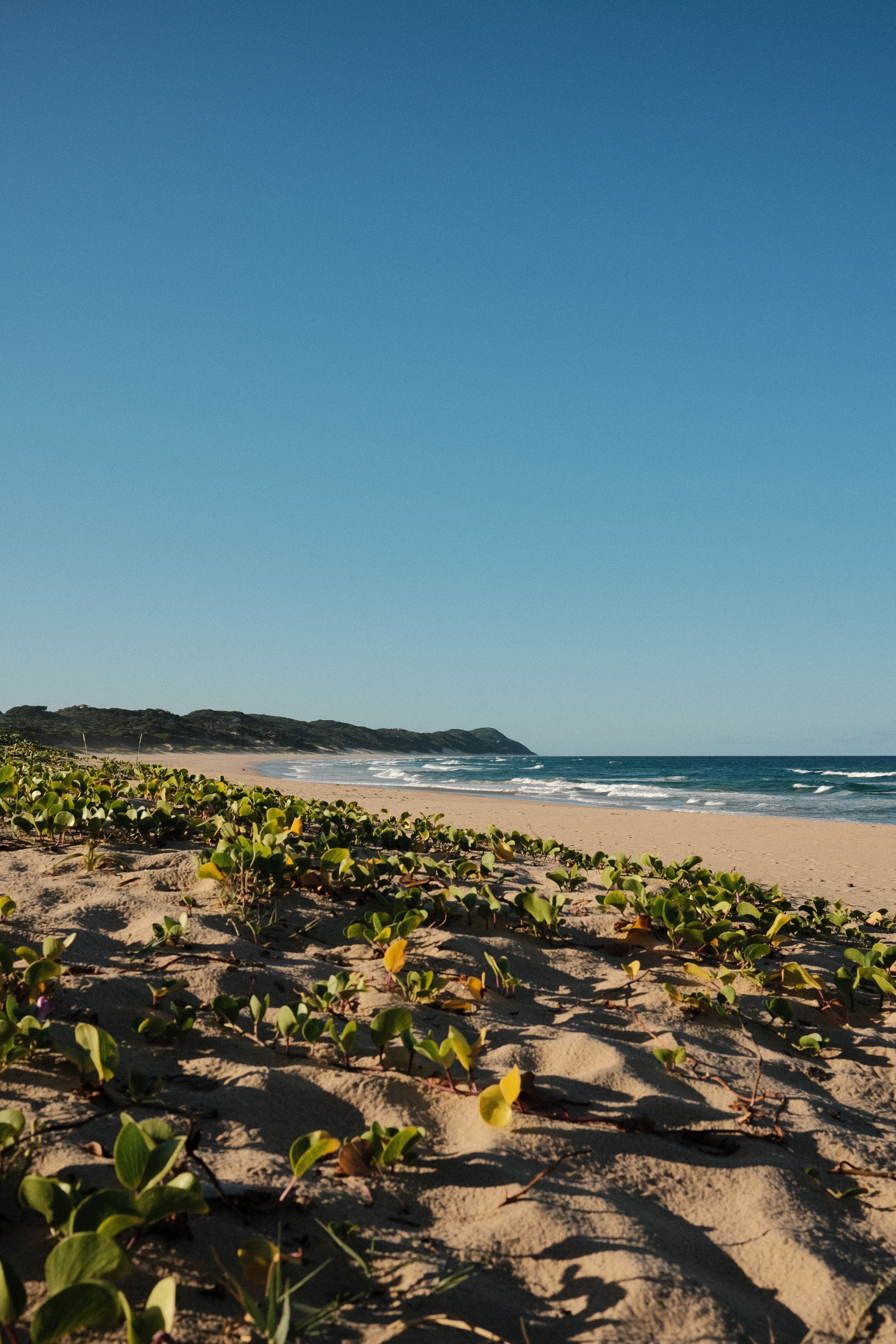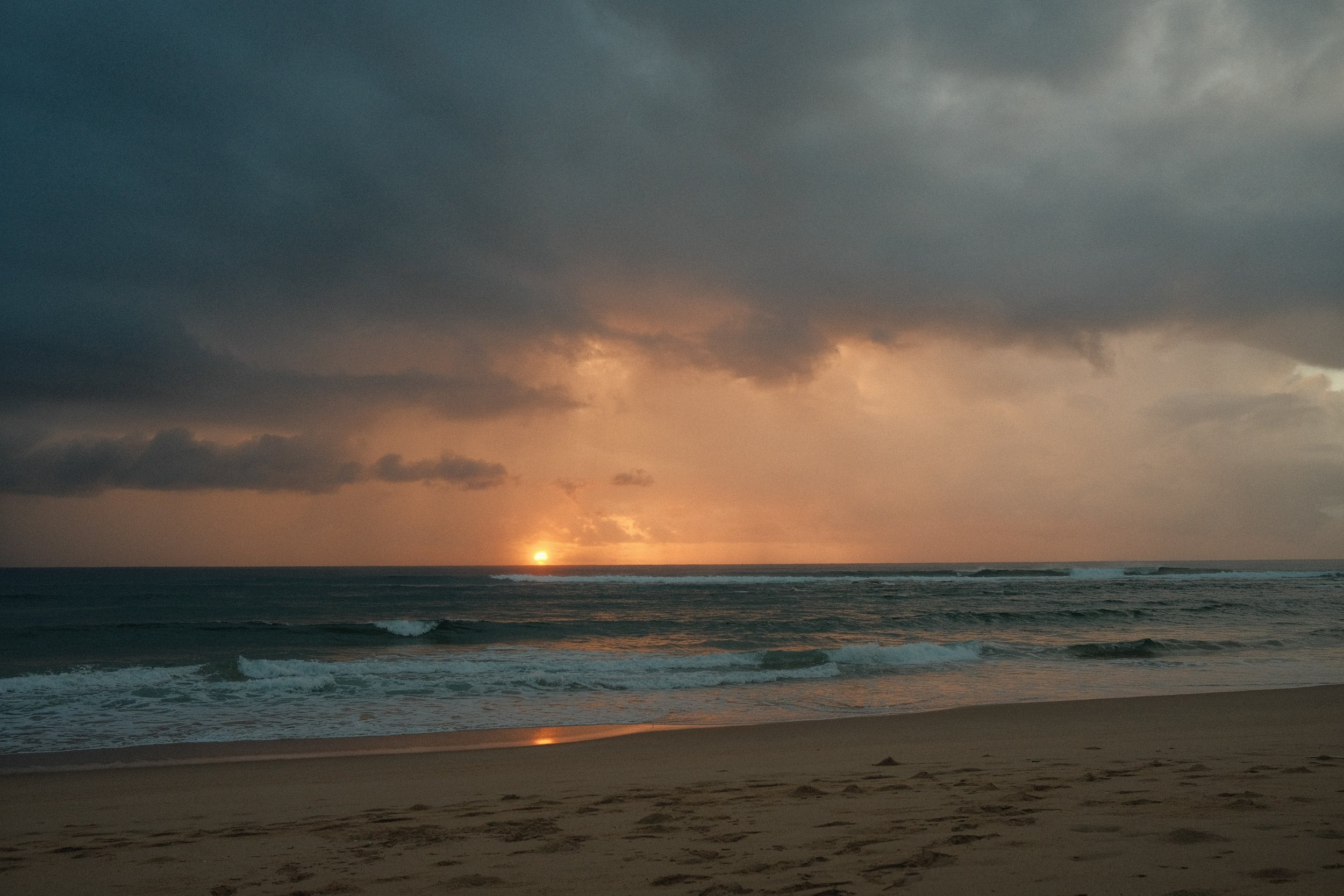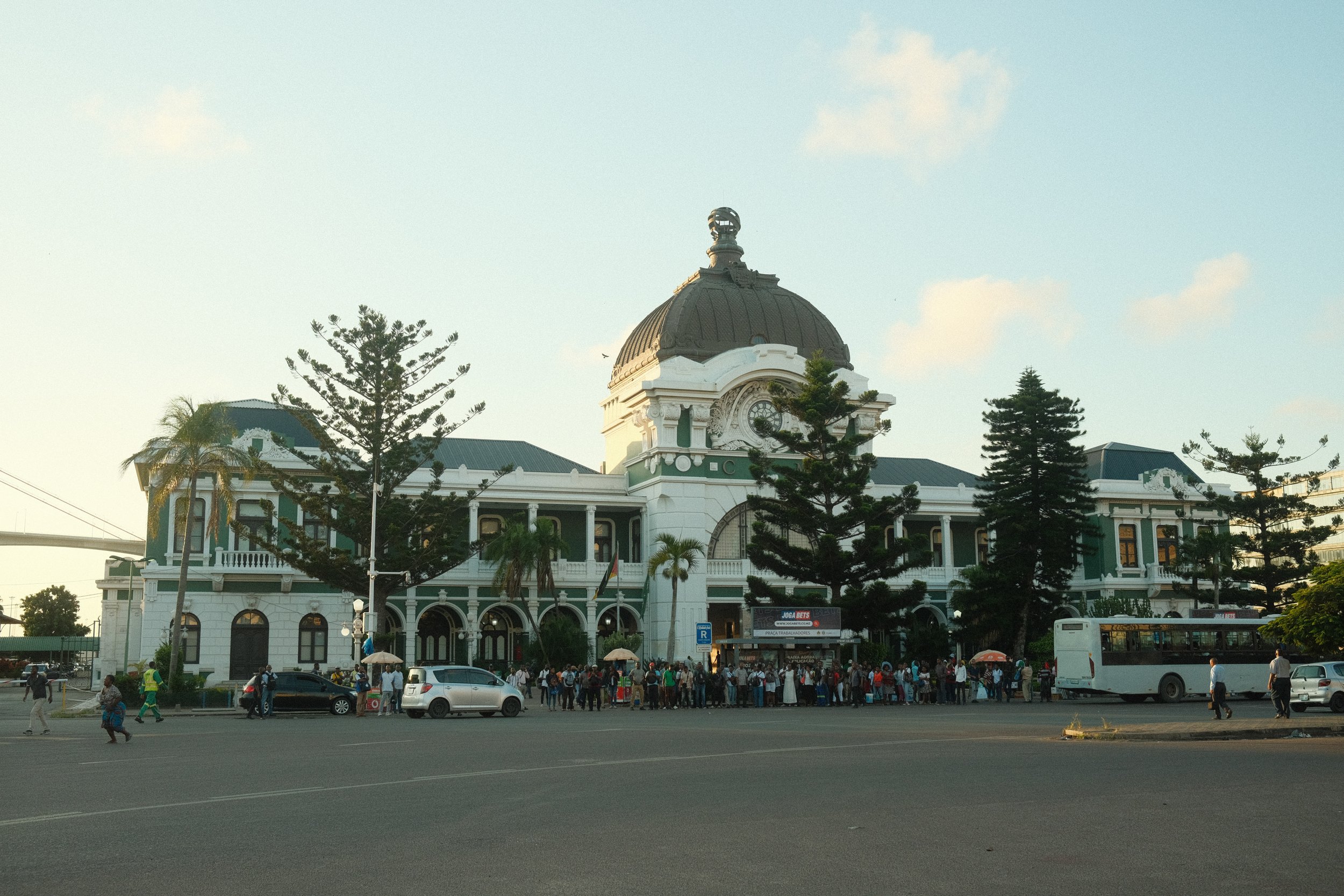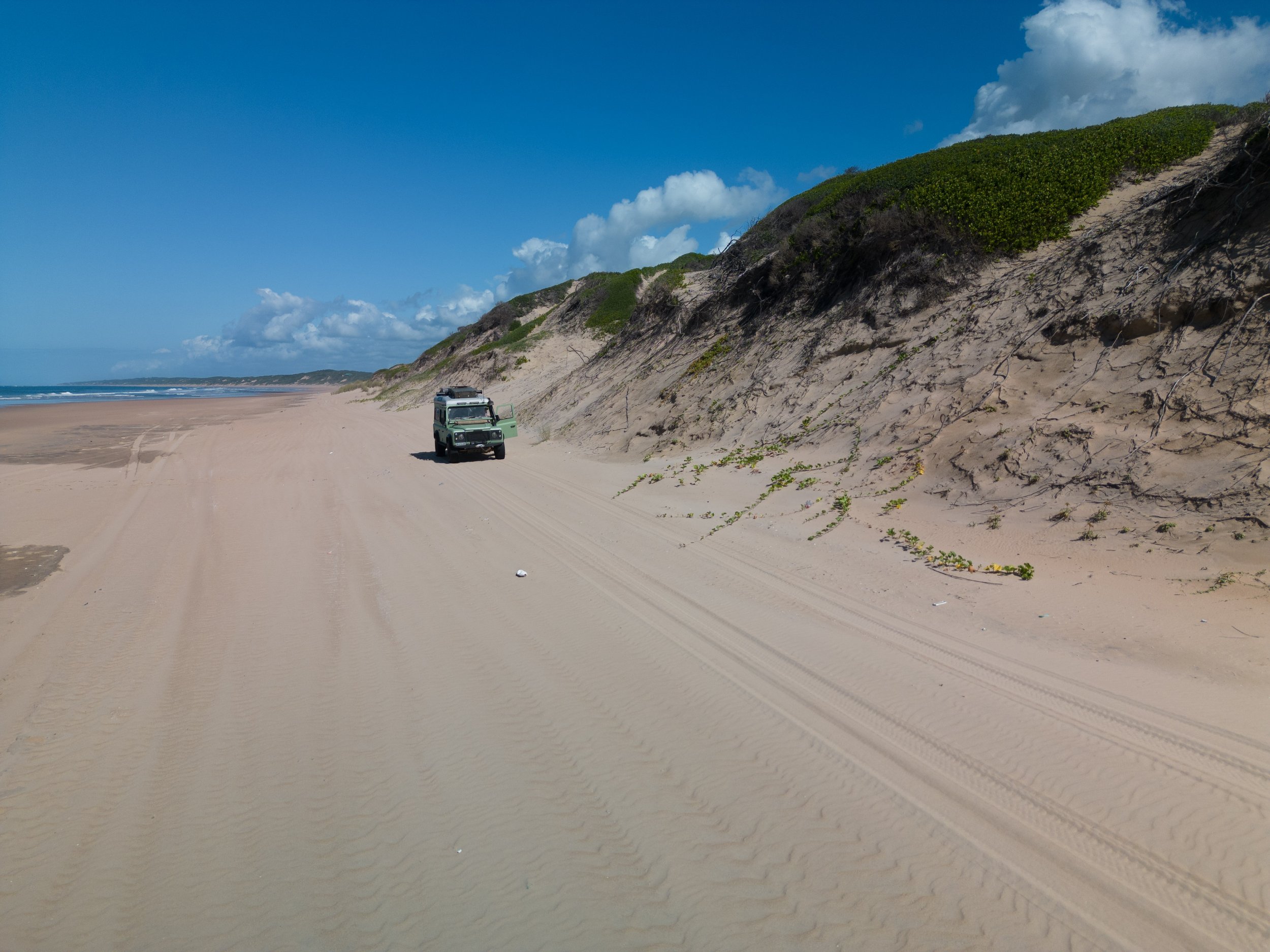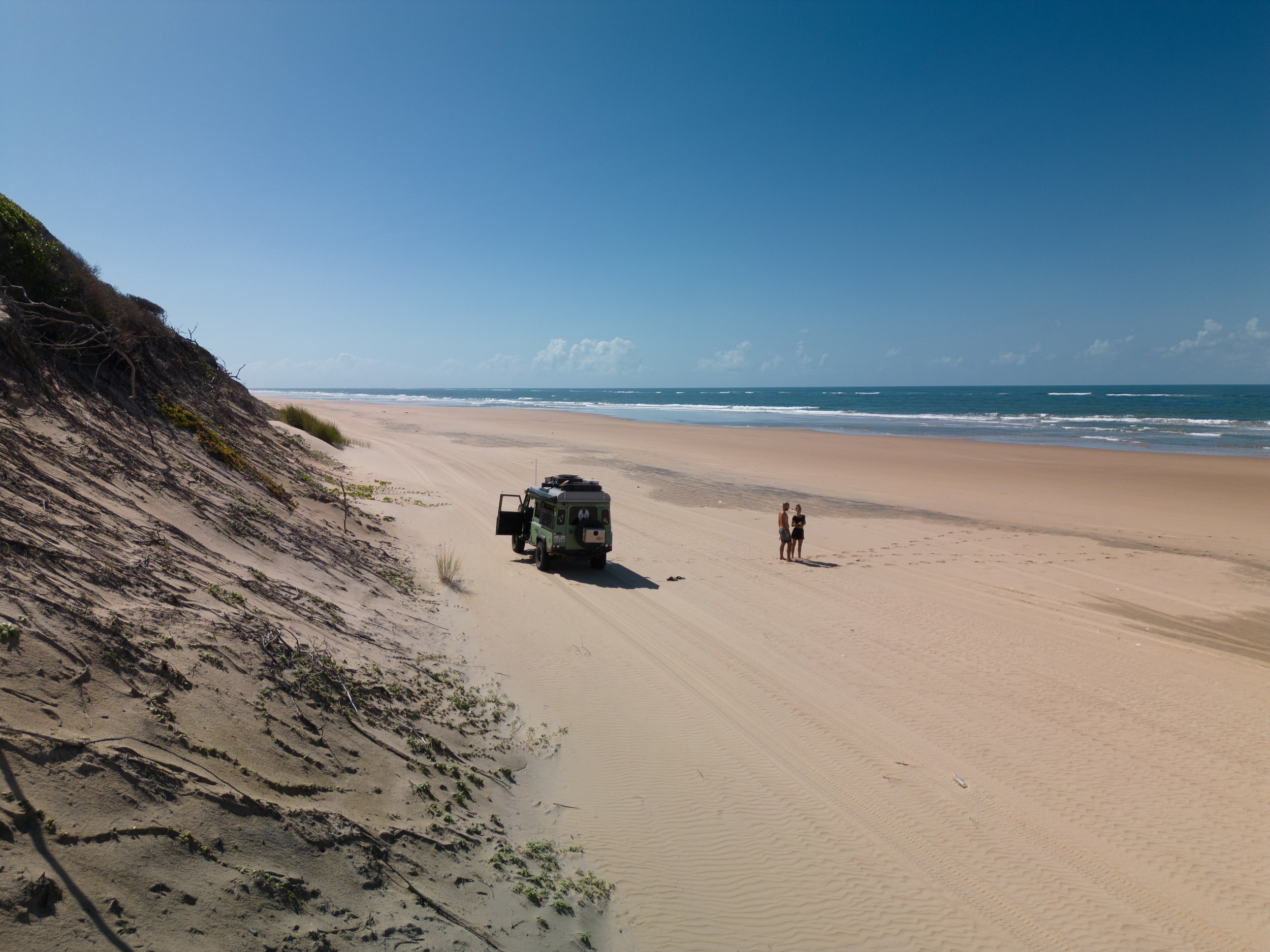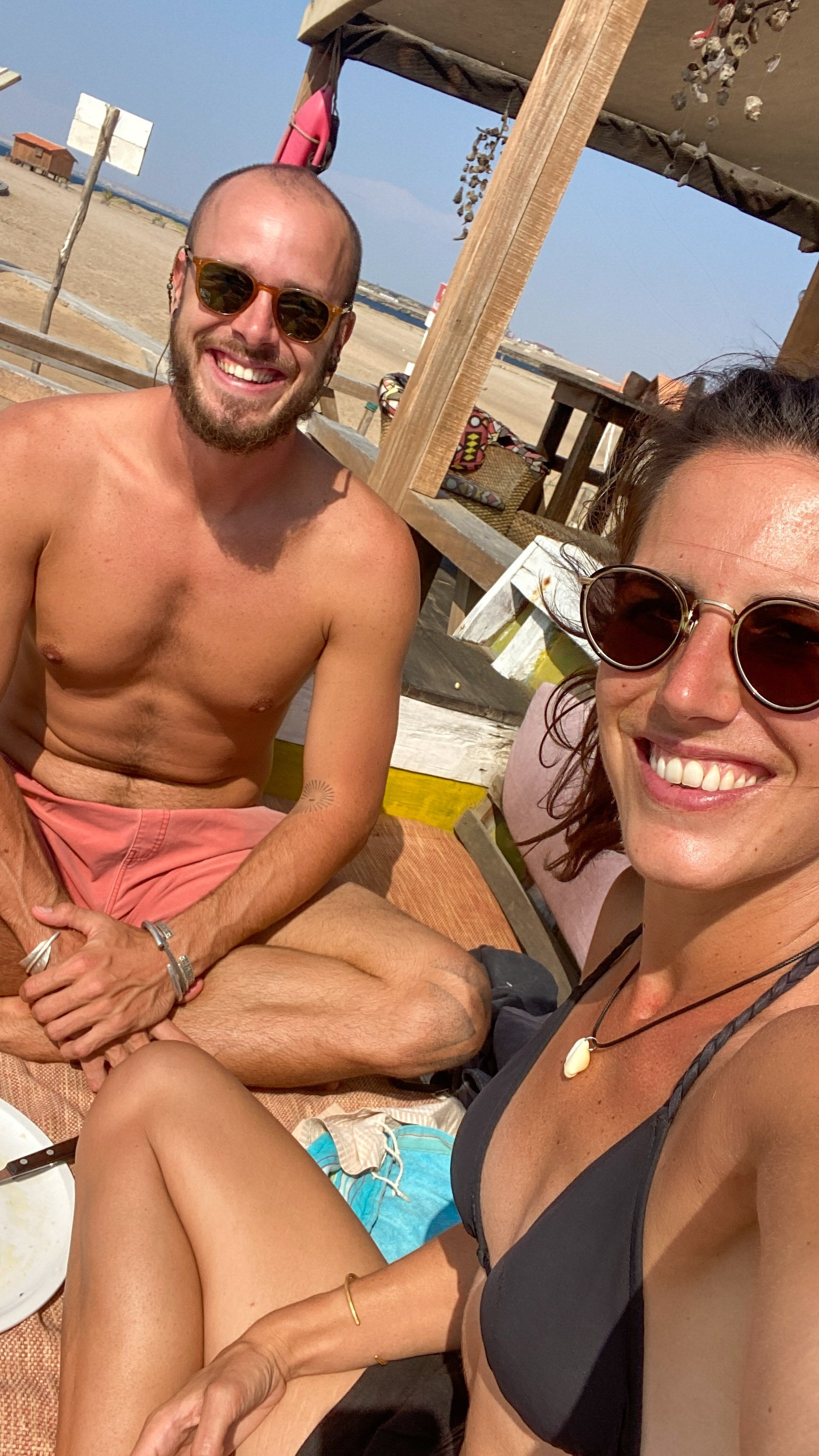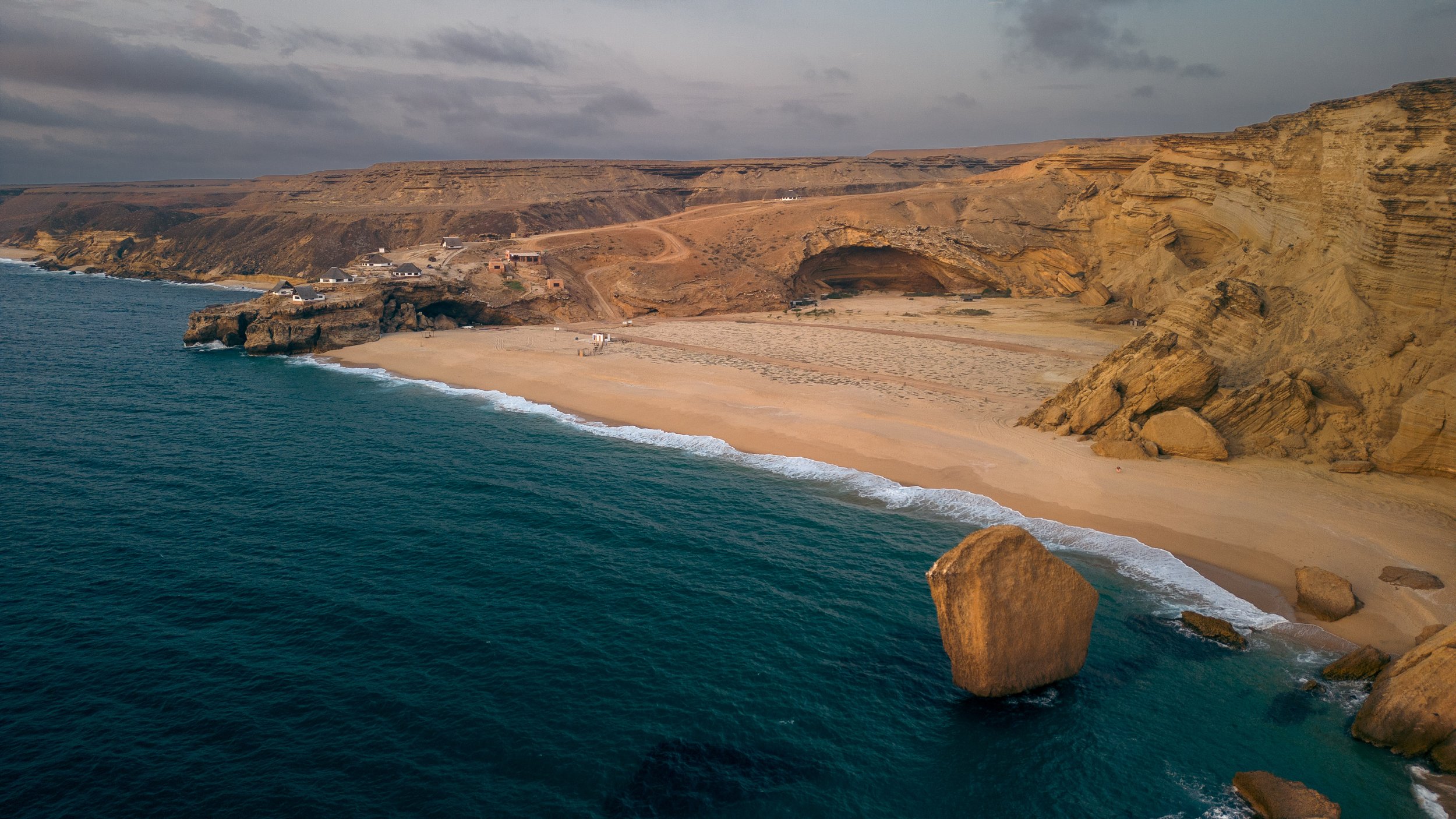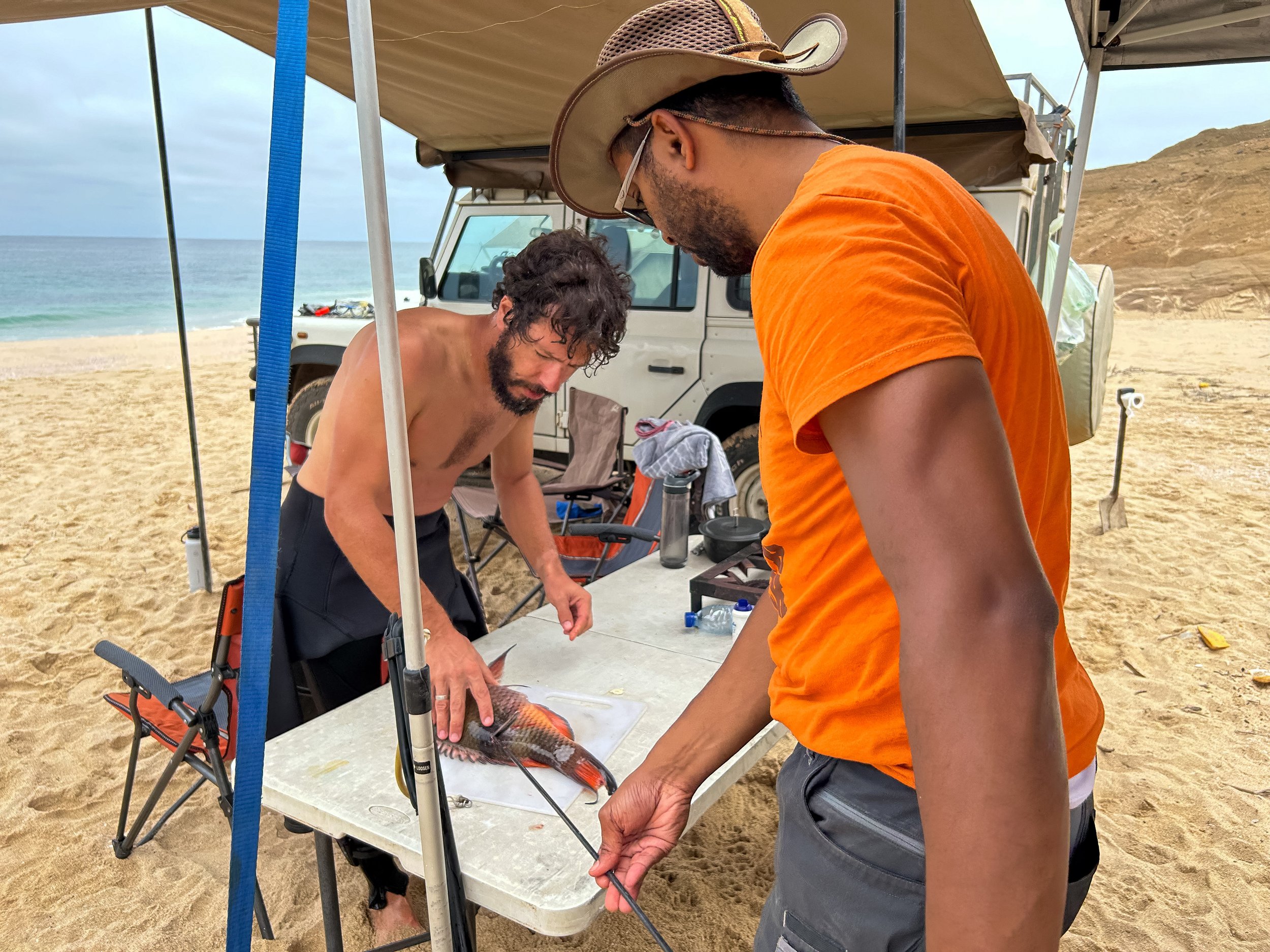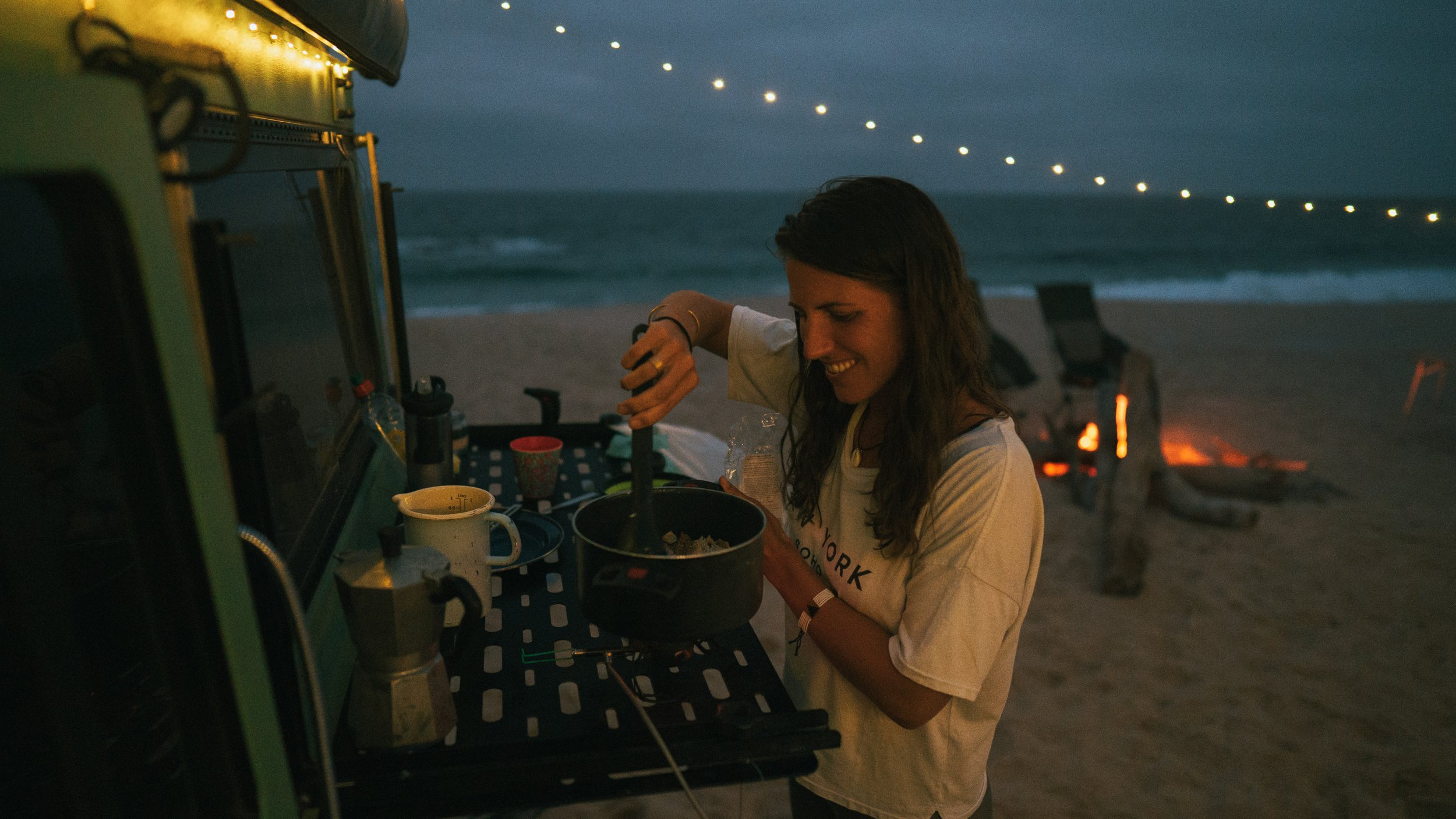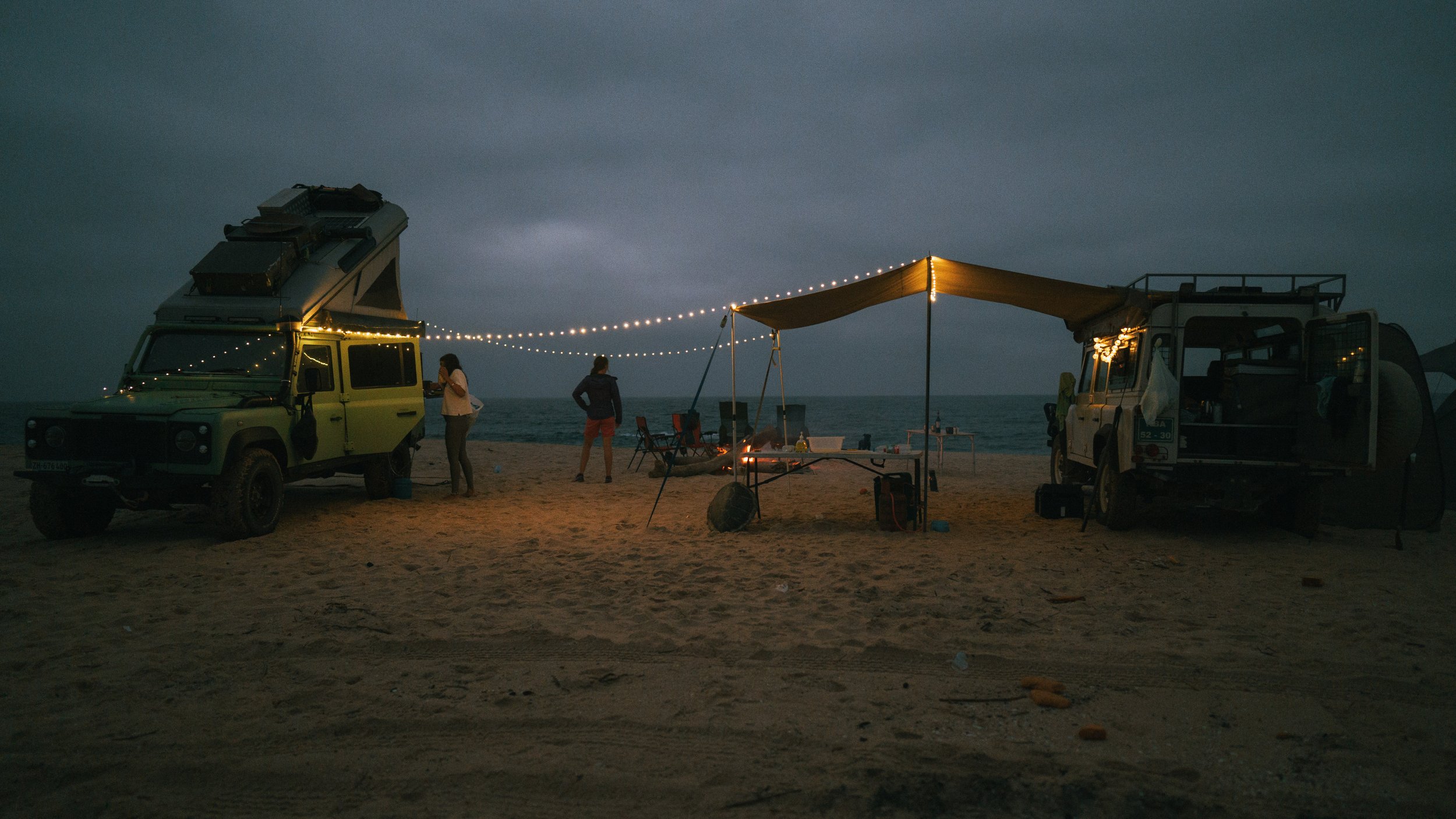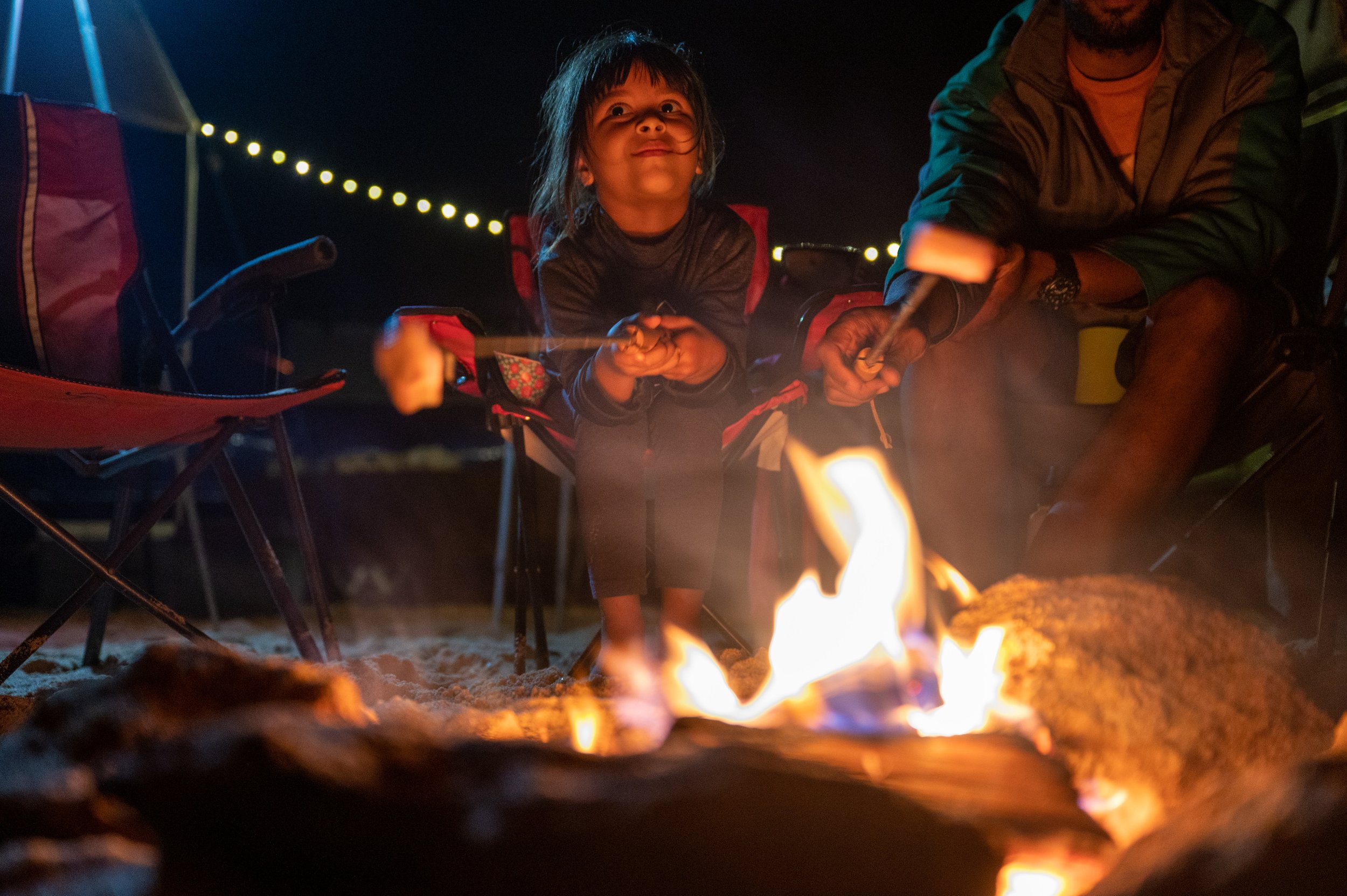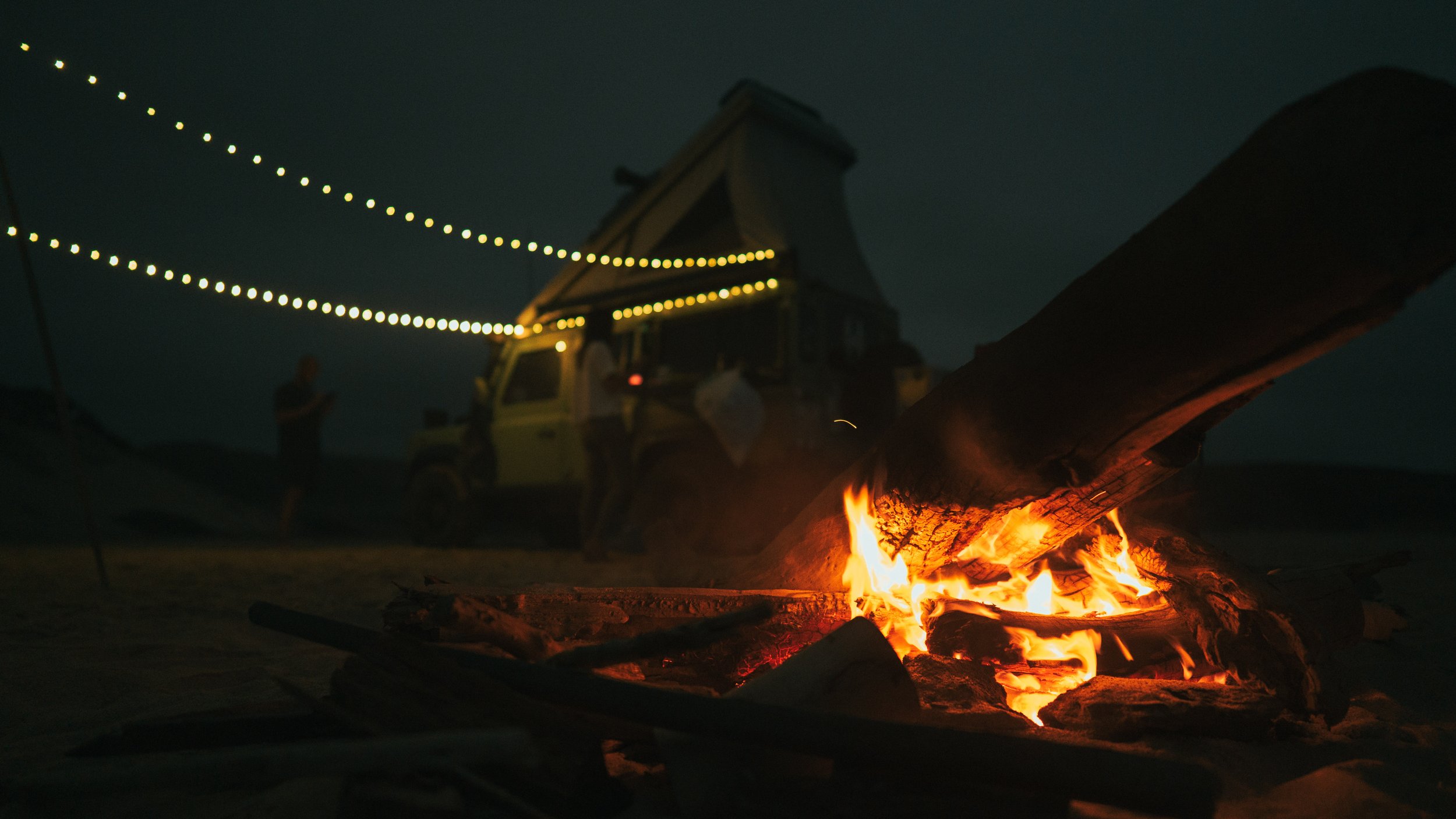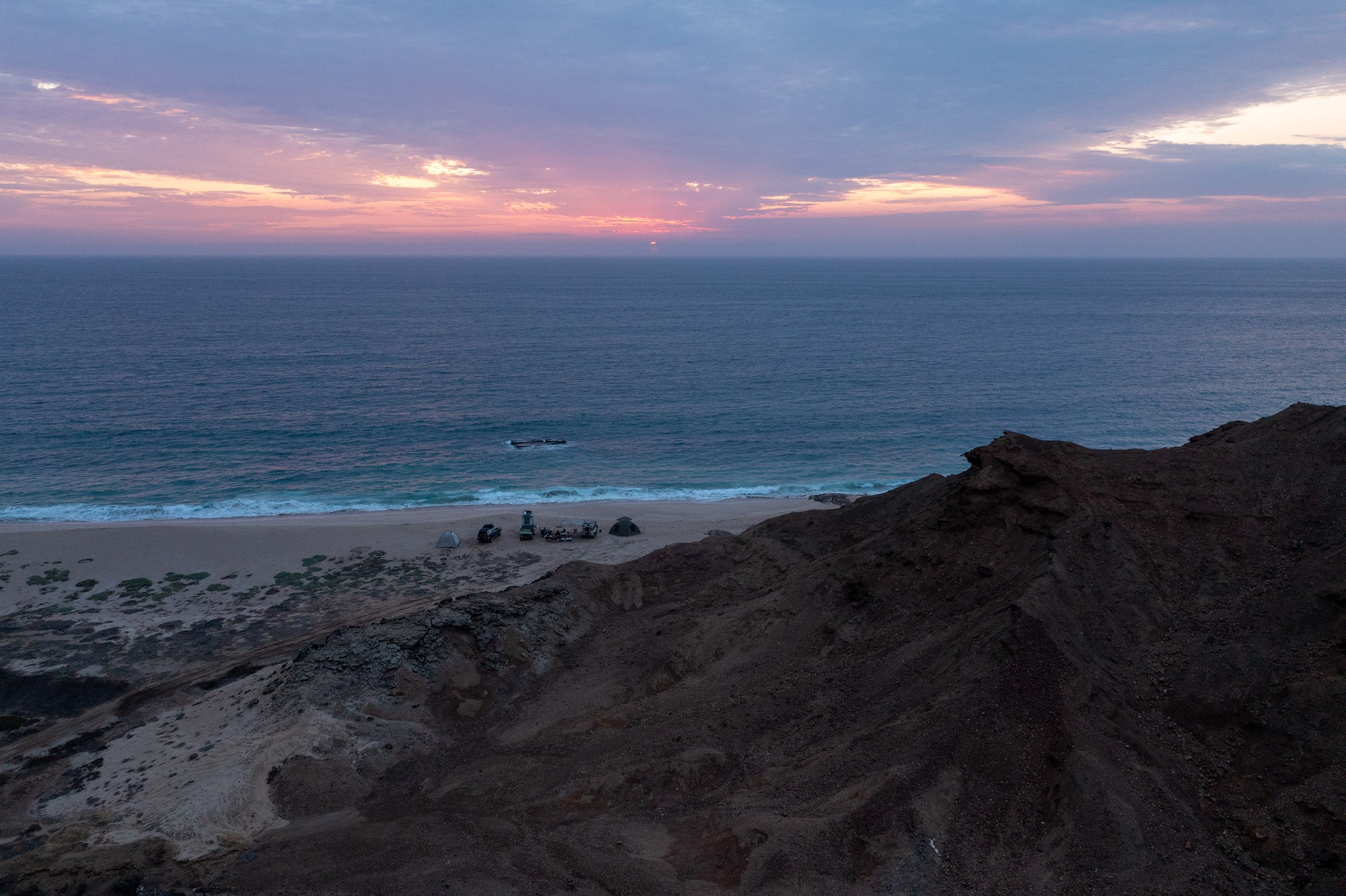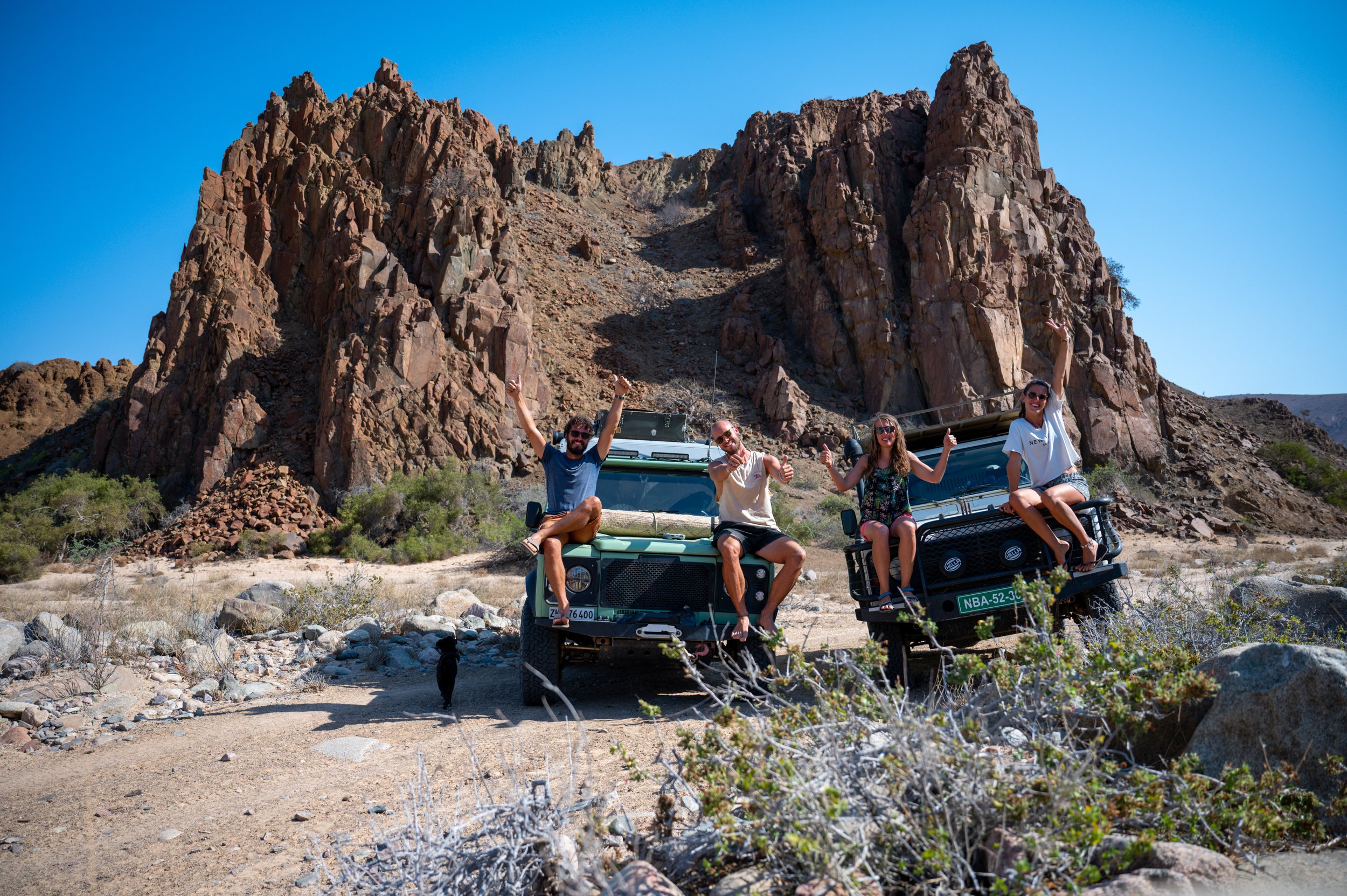Pomene was the next place after Tofo, which was recommended to us by different people. Even though it meant driving up a peninsula on sand tracks for about 2 hours (and having to come back the same way), we wanted to give it a shot and check the place out. We couldn’t find an official campsite but read about an informal campsite in the local village. To reach Pomene, you have to drive through a national reserve, so when we stopped at the gate to pay the entrance fee, another car with a family from South Africa was also there. They were very interested and amazed by our traveling through Africa in our Defender. They were just on their way to their family vacation home at the coast close to Pomene and asked us where we were going. We told them that we wanted to camp at the local village, which surprised them even more :D They offered us to come and camp at their place, but we felt a bit uncomfortable crashing their family vacation just like that, so we told them that we would try to camp at the village and if it would not be possible, we would come to look for them to camp at their place. We said goodbye and continued on the sand track up to Pomene.
We arrived at the village just before it got dark and were shocked... Cyclone Freddy, who hit Mozambique just a few weeks earlier, must have gone straight through this village. Many palm trees were on the ground, and some houses were destroyed; we instantly felt bad for showing up here in our Defender. So many people must have lost everything they owned, and driving through the village in our comparatively luxurious home on wheels didn’t feel right. But it was too late to turn around; it started getting dark already, so we asked the people to see the village chief to get permission to camp. Most locals did not speak English, but eventually, we managed to communicate somehow, and a girl showed us a place where we could camp. We started to cook a small dinner in the company of an adorable dog when suddenly, a lady showed up with a bucket of water on her head for us. Just when we wanted to climb into bed, Rito, the village chief’s grandson, appeared at our campsite. He spoke English very well and welcomed us warmly to his place. He told us he was very happy to have some visitors because most tourists had stayed away after the cyclone. He was finally excited to see some strangers again, so we felt much better after talking to him. He also told us that, luckily, the cyclone hurt no one in the village; they “only” had some damaged houses. He offered to take us on a walk through the village the next day.
In the morning, we got up and first swam in the deep blue ocean at our doorstep. Then, Rito came to pick us up for the village stroll. It was devastating to see the damage but also beautiful to see how everyone helped each other rebuild the destroyed homes. Seeing how quickly they recovered from this cyclone again was pretty impressive. The bakery’s roof was broken, but the oven was still working, so nevertheless, a lady was baking bread for everyone in town. This area is very exposed to cyclones, so it wasn’t the first time for them to experience it. However, Freddy was exceptionally strong. Also, cyclones have become more frequent, a terrible effect of our global climate change…
When we returned to our campsite, it was already noon. We cooked a quick lunch and then explored the other side of the peninsula. Rito came with us again. He showed us the old abandoned hotel, the blowholes at the beach, where the waves push the water through the rocks, an old shipwreck, and some lodges, which all were closed due to the cyclone’s damage. When we returned to the village, a car passed us and then stopped: it was the South African family from the entrance gate. They told us that they were worried about us and therefore came to look for us. It was lovely of them, and we said to them that we found the nicest people and a beautiful camp spot, and they didn’t need to worry. Nevertheless, they invited us for dinner at their vacation home, but Tom and I had already ordered shrimp from a local fisherman and had promised Rito that we would cook them together with him (he had never tasted shrimp, can you imagine?). So instead of joining them for dinner at their house, we made plans to drive up to the South Africans the next morning before leaving Pomene to enjoy a coffee together.
The fisherman returned with 2kg of shrimp, and since we wanted to support the community as well as possible, we decided to buy it all. Rito showed me how to cook coconut rice (very lekker and so simple), and Tom and I prepared the shrimp together with Broccoli we still had in our fridge. Just after we had started to cook, another nice Defender pulled up - that’s how we met Omar and Chadyne, a couple from France/Marokko who drove down the west coast. Rito showed them where they could camp, and since we had plenty of food, we invited them to join us for dinner. It turned into a late night, sharing travel stories and laughter. It was Rito and his family's first time tasting shrimp and broccoli! We had a great time all together, and Tom and I would have loved to stay another night in Pomene with our new neighbors, but we desperately needed to make some phone calls to plan our trip back home, and there was no signal in Pomene (the antenna was broken). We invited Chadyne and Omar to join us in the morning to drive up to the South Africans on the other side of the peninsula because this area is fenced and usually not accessible to the public. They gladly accepted, so we drove to the gate where we met the South Africans in the morning. They were very excited to meet more adventurous Overlanders :-) At their beautiful vacation home, the rest of their family already awaited us with coffee and tea. They took us on a walk up to the lighthouse to take some pictures and then spontaneously invited us to stay for some burgers for lunch. They had soo many questions about our travels through Africa, and of course, we had many stories to share.
After lunch, unfortunately, it was time for Tom and me to hit the road. We wanted to reach Vilanculs, a 4 hours drive away. We said goodbye, and after only a few hundred meters, we hit some low-hanging branches and ripped off a box attached to our roof… Luckily, nothing was broken except the straps, but we still spent almost an hour fixing everything before continuing. Eventually, we reached Vilanculos and arrived just in time to watch the sunset on the red dunes, a famous place in town, to finish the day. To spend the night, we drove to the campsite just next to the dunes called Villas do Indico. It’s a hotel with a lovely pool area, restaurant, and a small campsite behind their bungalows. We cooked dinner and were excited to spend the next day at the beach and pool doing nothing.
After two nights, we wanted to continue to Inhassaro, another town on the coast not too far away, where they had more campsites directly at the beach. We wanted to go to Vista de Bazaruto, a new campsite with some nice reviews. After buying some veggies at the market and fresh bread at the bakery in town, we followed the roads toward our destination. Since the roads to the campsite were flooded, we had to drive along the beach. Luckily, it was low tide, and reaching the place was not a problem. Lourens, the owner, welcomed us warmly, and we had a beautiful front-row camp spot all to ourselves. We stayed for three nights and very much enjoyed our last days at the beach. Barbara and Urs happened to stay at a campsite just a couple of kilometers further north at the beach, so Tom and I went on a stroll along the beach and met them for a last dinner together on this trip :-)
Another funny coincidence was that Willie, the owner of a mango farm where we planned to sleep along the way to Zimbabwe, stayed at the same campsite as Barbara and Urs. When I texted him to ask if it would be possible for us to spend a night at his farm, he replied that he was in Inhassaro but going to drive to the farm the next day. So we met Willie and his family at the beach, and he was pleased to have us as his guests on the farm the next day.
We packed up and left early the following day since we had heard many stories about the road up north from Inhassaro. And unfortunately, the reports were very accurate, The N1, the national highway of Mozambique, became worse and worse. First, there were more and more potholes on the road until, eventually, there were only some patches of tar in between deep holes; it was not fun to drive this stretch for 10 kilometers; we needed an hour! When we finally arrived at the mango farm after spending the whole day in the car, we were very happy to get out of it. Willie came even later than us and invited us for coffee the next morning. We spent a restful night and enjoyed coffee and talks the next morning before continuing towards the Zimbabwe border.





